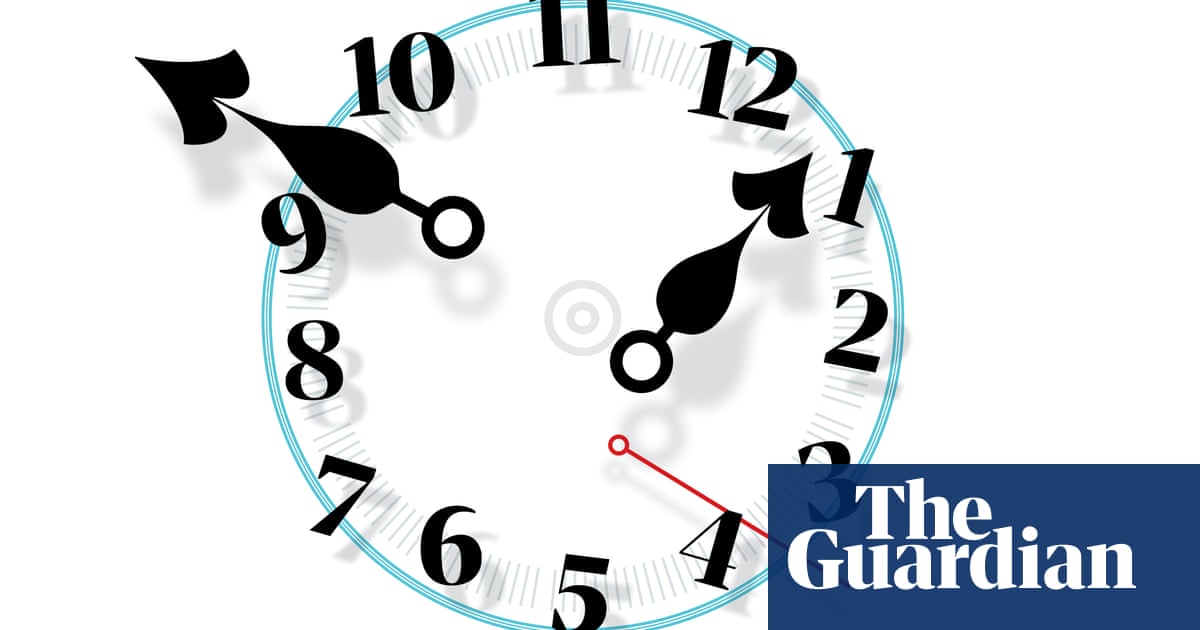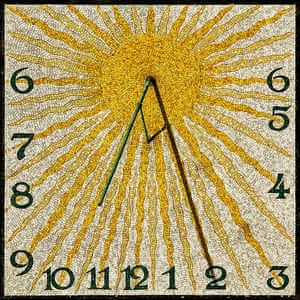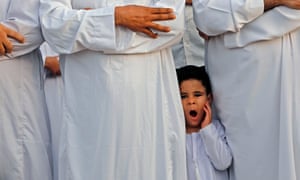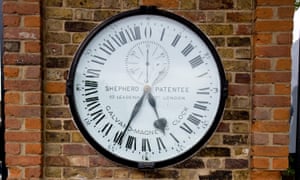We examine where daylight saving time came from and why it doesnt actually save daylight at all

Whats the point of daylight saving time?
In short, to make better use of the light. When we move clocks backward an hour in the autumn, we are effectively transferring an hour of daylight from evening to morning, when it is arguably more useful to more people. The opposite thing happens in the spring.
Daylight saving time is specifically the period between spring and autumn when we get an extra hour of daylight in the evening. Smarter readers will have noticed that no daylight is actually saved.

When did it all start?
The idea of fiddling with time to save energy or make the day seem longer goes back more than 200 years, though it was not until the first world war that it was finally taken seriously.
Coal shortages throughout Europe prompted Germany and its ally Austria-Hungary to take up daylight saving in 1916 to preserve energy, and a flurry of other nations on both sides of the conflict quickly followed suit. The UK took the plunge in May 1916 and has stuck with it ever since.
Many countries dropped the ruse after 1918, only readopt it during the energy crises of the 1970s.
What is happening this year?
All EU member states move clocks back one hour on Sunday, under a law that harmonises the duration of wintertime to prevent a proliferation of different seasonal changes across neighbouring countries.
In the US, clocks go back on the first Sunday in November.
In the antipodes, New Zealand moved its clocks forward at the end of September and Australian states that observe daylight saving (New South Wales, Victoria, South Australia, Tasmania and the Australian Capital Territory) made the switch on the first Sunday in October.
Russia decided to stick with daylight saving all year round in 2011, but that led to darkness at noon in some latitudes, and so in 2014 it reverted to standard time in the autumn. The clocks have stayed there ever since.

What are the knock-on effects of daylight saving time?
Well at this time of year, an hour extra in bed for a start. But DST has far wider ramifications, for energy use, farming, even mood.
Some argue that DST does not really save energy, as less household usage in the evenings in summer might be offset by greater morning usage.
Health impacts are widely touted: people can get more exposure to sunlight through the summer DST months, boosting their vitamin D levels. But critics argue that disruption to circadian rhythms (sleep patterns) can negatively impact on human health. Studies have found that the risk of having a heart attack increases in the first three weekdays after switching to DST in the spring.
However they also found that the extra hour of sleep after the clocks went back in autumn decreased the risk of heart attacks in the first few weekdays after switching.
Studies suggest that although getting an extra hour of sleep when the clocks move back does not lead to people sleeping longer, the loss of an hour of sleep when the clocks move forward negatively affects sleeping patterns for several weeks afterwards.

Is there an economic effect?
DST is thought to have an impact on the economy but again it is a mixed picture. While the retail and tourism industries do benefit from the extra hour of summer evening daylight, that may well be offset by some of the health effects mentioned above.
The farming industry has traditionally disliked DST for its impact on everything from milking cows to reaping harvests. But an NFU spokesman painted a more nuanced picture. The last time we tested opinion among our members there was a narrow majority in favour of lighter evenings, he said.
The aviation sector is little affected. Plane schedules have to work around the issue of countries changing clocks at different times. To do so all airplanes and airport timetables run off of UTC which is based off GMT.
Is DST dangerous?
It depends if youre driving or not.
Peak driving times are between 8am and 10am in the morning between 3pm and 7pm in the afternoon.
When the clocks move back in autumn, it means that the majority of these peak hours in the afternoon are in darkness. More accidents happen for a whole variety of reasons in the afternoon peak than in the morning peak, and studies have suggested that putting the clocks back in the autumn might increase accident numbers.
For this reason, Rospa (the Royal Society for the Prevention of Accidents) proposed that Britain retain daylight saving all year round, arguing that darker mornings were marginally more preferable to darker evenings.
While were talking about danger, there also appears to be an impact on crime, with the lighter spring evenings less appealing to hoodlums.
Is it popular?
A YouGov survey suggest that a slim majority of people are in favour of keeping daylight saving time, with 44% saying that they would prefer to keep the current system of switching the clocks forward and back twice a year, as against 39% who would like to scrap it.
The survey shows interesting regional differences. Scotland heavily favours the status quo, as switching to DST all year round would result in sunrise after 10am in some parts.

Which countries dont bother with DST?
About 70 countries observe daylight saving time. Most countries around the equator do not, as there is little variation in daylight across the year.
Most Islamic countries do not use daylight saving time as during Ramadan it can mean that the evening dinner is delayed till later in the day. Morocco suspends DST during the fast. Iran utilises DST, with no discontinuation for Ramadan. Most of east Asia and Africa does not use daylight saving time.
This year the European parliament voted to scrap daylight saving time by 2021. If ratified, it could throw up yet another Brexit-related headache.
There cant be a Brexit angle to this surely?
Its 2019 theres a Brexit angle to everything.
If the UK leaves the EU before 2021 and the bloc goes ahead with its plan to scrap DST, a situation could arise in which for half the year Northern Ireland and the Republic of Ireland would be in different time zones. Forget hard border, soft border and customs border: this would be a time border.
On the upside, it might allow for grabbing a quick sandwich to eat in, say, Derry before popping across the border to Donegal and having lunch again.

Ha! Time is after all a fluid concept?
In our modern age of digital watches, smartphones, rail timetables and synchronised calendars, it may seem that time is fixed and orderly. This is not the case.
Before the technology developed to reliably tell the time, people structured their time much more loosely. Ancient civilisations divided the daylight into 12 hours no matter how long or short daytime was. This meant daylight hours became longer during the spring and summer and shorter in the autumn and the winter.
We know this to be the case in ancient Rome as the Romans kept time using water clocks with different scales for different months.
Even as mechanical clocks and timepieces began to be invented, time still varied widely from place to place. In Italy, for example, clocks in Venice always ran a half hour ahead of clocks in Turin.
Our understanding of uniform time so called clock time is a very recent concept that dates back to the early development of railways.
As railroads spread, the problem of every town and station having its own individual time made coordinating rail travel tricky. Nations began to standardise time because of this. The UK was a pioneer, starting in the 1840s with the Great Western Railway, and by 1883 all UK railways ran on GMT.
Other nations followed suit, with the occasional quirk. Up until 1911 the clocks at the exterior walls of all French railways stations ran at standard Paris Mean Time (which ran about nine minutes out of sync with GMT) but clocks inside the station and the railways themselves ran five minutes behind this time in order to allow passengers to be late and still catch their trains.
International time zones didnt standardise across the world until the 1930s. Nepal in 1956 was the last country to adopt a standard international time zone pegged to GMT.
Further reading
-
A Brief History of Time Stephen Hawking
-
The Order of Time – Carlos Rovelli
-
In Search of Lost Time Vol. 1: The Way by Swanns – Marcel Proust
-
Time Travel: A History by James Gleick


Recent Comments